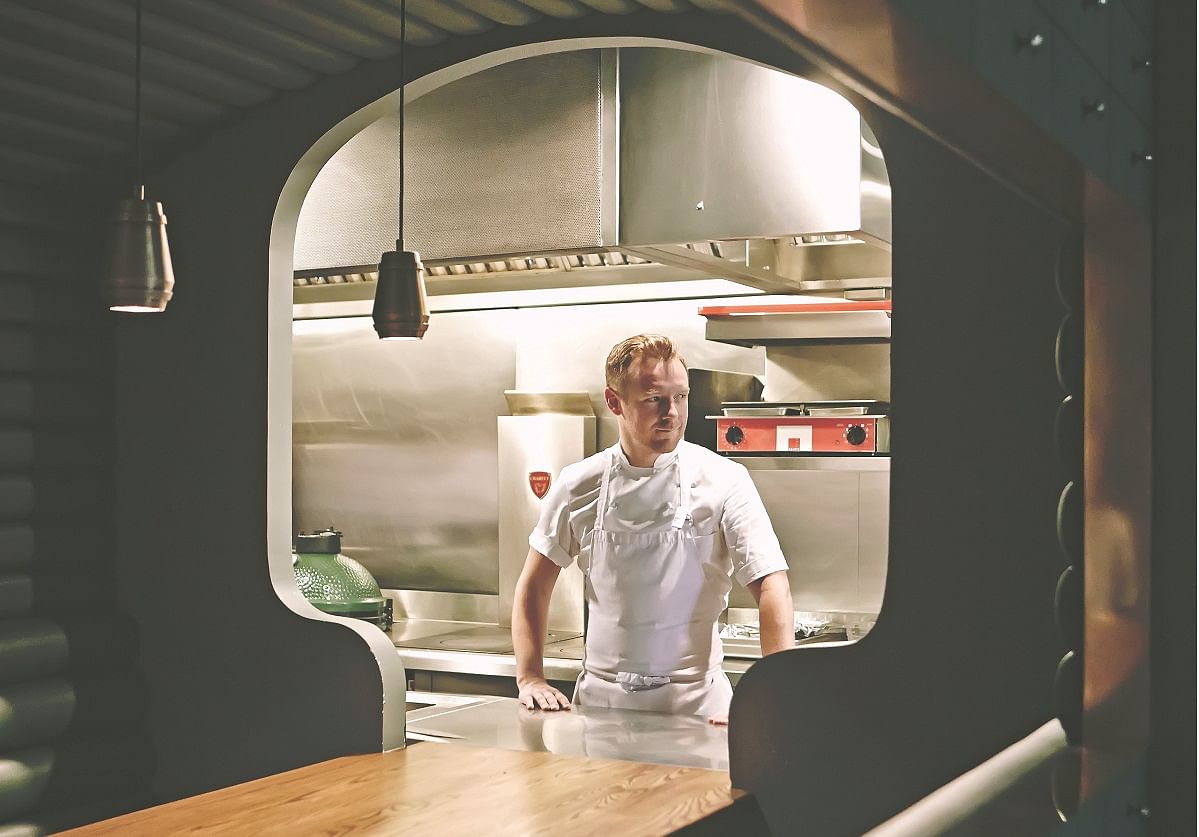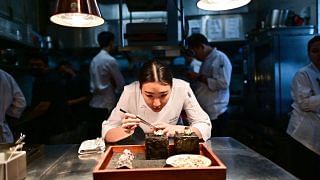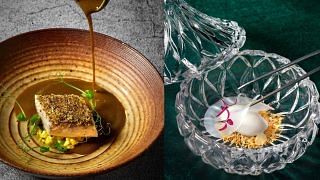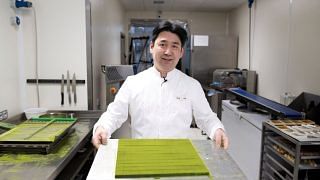[dropcap size=big]A[/dropcap]ndrew Walsh is distracted. Perched at the edge of his seat and speaking to us, the chef is constantly sneaking glances at his mobile phone, just in case somebody needs him – because everybody does, now that he runs his own restaurant Cure. “Being your own boss means you can never rest or switch off. It’s go, go, go, from the minute you get up.”
That’s 7am on the dot, and Walsh has a precious half hour to gulp down an espresso shot and do some yoga before he heads to work, armed with another coffee (latte, this time). The caffeine fix is easy to understand; the chef-owner runs on just five hours of sleep daily.
(RELATED: Andrew Walsh is one of The Peak’s 9 Chefs to Watch list for 2016.)
But the smile on his face makes it clear that Walsh is enjoying the challenges of helming his own restaurant. The 32-year-old has spent half his life working in the kitchens of Michelin-star chefs like Tom Aikens and Jason Atherton, his last being a three-and-a-half year stint at Spanish tapas joint Esquina. Now, he is ready to come into his own.
“Creating twelve new experiences
in a year is important to me.
In this business, if you go stale,
you don’t survive.”
“When you have been (cooking) for other people, there comes a time when you look in the mirror and say, ‘Why not do it for myself?’ And that’s just business,” he says. This hunger for success, coupled with a confidence that stems from his repertoire of skills, is what drove Walsh to strike out on his own.
“Aikens taught me a lot about detail, technique and precision,” says Walsh, who smiles wryly as he recalls working under the famously temperamental chef. From Atherton, he learnt to hone his business acumen and pay attention to the minute details of restaurant operations. “Nothing was too small for him; he could go from checking toilets to brokering deals with top hotels and running a franchise of restaurants around the world.”
Cure is where Walsh puts it all together. He cites the “fine-dining bistro” as a concept that is gaining traction in Europe and here. “Young chefs who have trained under Michelin-star chefs have a lot to offer. They need a space where rental costs won’t kill, but what they put on the plate is right up there with fine-dining establishments,” he says.

And Walsh is more than ready to show off what he can put on the plate. Never mind that he has suppliers to deal with and meetings to attend, the Irishman pushes himself every month to come up with a new menu that emphasises seasonal produce. “It’s a bit like omakase, where you don’t know what you’ll get. Creating twelve new experiences in a year is important to me. In this business, if you go stale, you don’t survive,” says Walsh. While the menus evolve with the seasons, star dishes will make a comeback every six months, like cured Scottish salmon with beetroot, sitting in a chilled broth made from almonds, yogurt and grapes, topped with buttermilk and vanilla snow for an icy finish.
Walsh is also in much better control now to orchestrate a memorable guest experience within the intimate 40-seater. From the temperature of the air-conditioning to the type of pen his staff hold (all waitstaff use the same pen to take orders so guests enjoy a consistent experience), he is a stickler for detail, and applies the same meticulousness when planning ahead.
“I don’t want to make the mistake of expanding too quickly when we are not ready. It’s about small steps at the right place and timing,” says Walsh. But he’s not ruling out a future with more spin-offs for Cure. “Maybe you will see a Cure coffee and deli or Cure charcuterie down the road,” he teases. One thing is clear: Whatever the future holds, Walsh will make it worth the wait. After all, he waited for more than a decade to come into his own – he can dictate his own pace.
Check out our other Chefs to Watch: Kirk Westaway | Han Li Guang | Bryan Chia & Petrina Loh | Ivan Brehm













